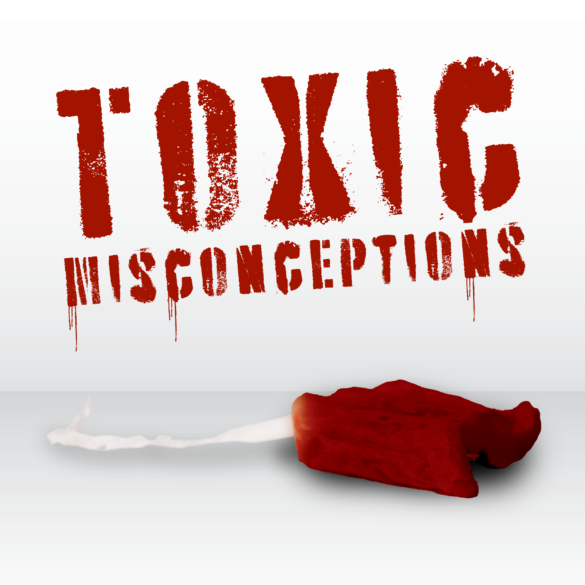“TAMPONS ARE ASSOCIATED WITH TOXIC SHOCK SYNDROME (TSS). TSS IS A RARE BUT SERIOUS DISEASE THAT MAY CAUSE DEATH.”
This is the warning on the back of a Tampax tampon boxes.
According to Barbara Phelps, Ball State assistant clinical lecturer of nursing, TSS is caused by a buildup in bacteria that can produce dangerous toxins. The toxins find their way in through a cut on the skin, which allows them into deeper tissue where they can enter the bloodstream and affect other organs. While the cotton with string is most commonly associated with TSS, Phelps said the disease can also invade the bloodstreams of people who don’t get their period, postmenopausal people, and children.
John McKillip, Ball State professor of biology, says TSS is caused by staphylococcus aureus (staph infection). These kinds of bacteria are commonly found on our skin, and they only cause real harm if they get deep into skin through cuts.
Some of the beginning signs of TSS are high blood pressure, a fever, and rashes on the palms of the hands and the soles of the feet.
When it comes to tampon usage, Phelps says there are a number of reasons why TSS might occur.
“Some of that bacteria is normal in the vagina … The use of tampons can increase the growth of that bacteria,” Phelps says. “If there’s a super-absorbent tampon, and it’s not fully saturated, and it’s removed, little tiny microscopic tears can occur in the tissue, but that allows that bacteria to then enter the bloodstream. That can also happen if we’ve had a surgery, so that bacteria may be present.”
According to student-researcher Olivia Coltharp, Ball State second-year medical technology major, there are many different types of staph bacteria. These bacterias can create all kinds of infections.
“It can cause TSS, it can cause UTIs (urinary tract infections),” Olivia says. “UTIs can be caused by staph, but there are a ton of different [bacterias] that can cause it.”
UTIs, according to the Mayo Clinic, are infections in any part of the urinary system. Most infections involve the bladder and the urethra.
Phelps says the cotton from a tampon can serve as a petri dish and can provide a breeding ground for the bacteria. This is why it is recommended to remove tampons after about eight hours to decrease the time for the bacteria to grow.
If someone got TSS from a tampon, Phelps says they should also avoid using tampons in the future because “the likelihood of reinfection is a little higher.”

McKillip emphasizes the importance of treating the infection early on due to the risk of vital organs being damaged. Patients with TSS are typically treated with an IV and some form of antibiotics.
McKillip, along with a group of biomedical students, are currently researching new antibiotics to treat things like staph infections. One of his students is trying to grow anaerobic bacteria, which can produce antibiotics. They are using dairy farms to find these potential antibiotics.
“We look at dairy farms because that’s an unexplored area for finding antibiotic-producing bacteria,” McKillip says. “I thought it’s perfect to farm the dairy farm and try to see … species of bacteria that have antibiotic-producing potential because they’re all around us.”
Aside from finding more effective antibiotics to treat TSS, staph infections may become worse due to antimicrobial resistance of the disease-causing bacteria. According to a study from the British Journal of Biomedical Science in the National Library of Medicine, antimicrobial resistance could be a primary cause of death as near as 2050.
According to Phelps, the reason most people associate TSS with tampon usage is because of an outbreak of the illness caused by tampons in the ’70s where 73 women died.
She says it is important that people receive accurate education on TSS, so they know who it can happen to and take the right steps to prevent it.
“The main thing people can do is just be as educated as possible,” Phelps says. “Follow [tampon companies’] recommended practices as closely as possible. Then, have early detection and prompt treatment, if they do experience any of the signs and symptoms, and have those factors in place.”
Sources: Tampax, Mayo Clinic, FDA, British Journal of Biomedical Science, Canadian Journal of Medicine,




